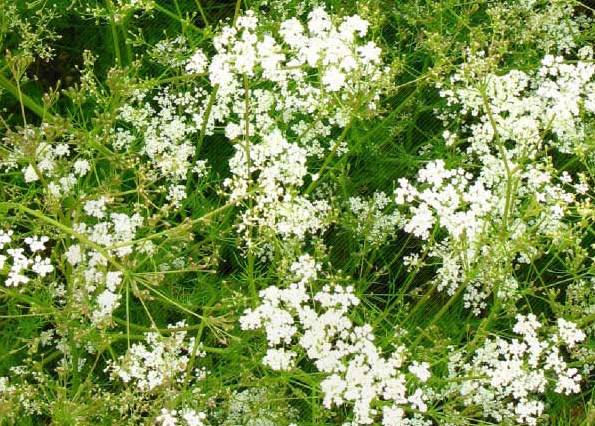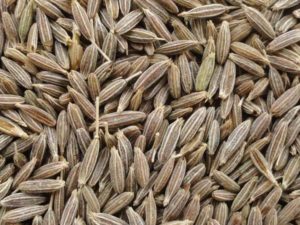Cumin Farming (Jeera) Information:-

Introduction of Cumin:- Cumin seed is basically native to the Egypt and it now grows in countries like in India, North Africa, China. Cumin popularly known as “Jeera” or “Zeera” in India and It is an important spice used in Indian kitchens regularly for flavoring various food preparations. Cumin seeds are used in various ayurvedic-herbal medicines also especially for stomach pain, obesity, digestion and dyspesia. Major cumin seed producing state In India are Gujarat and Rajasthan.
Health Benefits of Cumin:- The Cumin health benefits include its ability to aid greatly in digestion, improve immunity and treat piles, asthma, insomnia, skin disorders, respiratory disorders, bronchitis, common cold, lactation, anemia, boils and cancer .
Local Names of Cumin in India:- Jeera (Hindi) ,Jīlakarra [జీలకర్ర] (Telugu), J(ch)eeragam. (Tamil), Jeerige (Kannada), Jeerakam (Malayalam), Jirē [जिरे] (Marathi), Jeerae (Bengali).
Commercial Varieties of Cumin:- Below listed are some of the commercially cultivated varieties of Cumin in India.
RZ-19 : This variety is tall variety of cumin with pink flowers , erect stems, and bold pubescent grains; tolerant to wilt as well as blight; matures in 4 months to 5 months with an average production of 6.0 quintals /ha.
GC-1: This variety is an erect-growing variety of cumin with bold, linear, pink flowers and oblong, ash brown colour grains; tolerant to wilt disease; start maturing in 3 months to 4 months with an average production of 7.0 quintals /ha.
RZ-209: This Variety is an erect-growing variety of cumin with bold, grey, pubescent grains, pink flowers, resistant to wilt and blight diseases; matures in 145 to 155 days with an average production of 7.0 quintals /ha.
Climate required for Cumin farming:- Cumin crop does not grow well in humid and heavy rainfall climatic conditions. It thrives well in moderate dry and cooler climate and sub tropical climate is ideal for Cumin cultivation.
Soil requirement for Cumin farming:- Cumin cultivation requires loamy soils with good drainage supplemented with organic matter. If you are planning for commercial cultivation, should select a field in which cumin farming has not been taken up at least during last 3 to 4 years.
Propagation in Cumin farming:- Commercial Cumin is mainly propagated through seeds.
Sowing in Cumin farming:- Best time for Cumin seed sowing is November to December as it requires moderate dry and cool climate.
Seed rate in Cumin farming:- 12 to 16 kg of cumin seedlings/hectare is more than enough.

Weed control in Cumin farming:- Weed is a major problem in cumin farming. It requires weeding at 1 month and 2 moths after sowing cumin seed. Thinning activity should be carried during initial hoeing and weeding to destroy the excess plants. Weed also can be controlled by chemical application of herbicides. Applying pre-emergent Terbutryn or Oxcadiazone at 0.5 to 1.0 kg/ha or pre-plant Fluchloralin or pre-emergent Penimethalin at 1.0 kg/ha is very effective.
Irrigation/Watering in Cumin farming:- A light watering is required soon after sowing the seeds and thereafter second irrigation should be applied 7 to 10 days after 1st irrigation. Subsequent irrigations should be given depending upon the soil type and climatic conditions. Last heavy irrigation should be given at the time of seed formation. Better to avoid irrigation at the time of seed filling because it increases the incidence of blight, powdery mildew, and aphid infestation.
Manures and Fertilizers in Cumin farming:- 12 to 15 tons of farm yard manure (FMY)/ha should be supplemented at the time of soil or land preparation. Afterwards, P2O5 dose of 20 kg /ha should be applied at the time of seed sowing, N of 30 kg /ha should be applied as top P2O5 dressing either in 2 equal splits or can be given single dose in 30 days after sowing.
Harvesting & Yield of Cumin:- Before harvesting, Field is cleaned and wilt affected plants are removed. Harvesting is done by cutting the cumin plants with sickle. The plants should be stacked on clean floor for sun-drying. After sun-drying, seeds can be separated by light beating with sticks.
An average yield of 5 quintals /ha is achievable under proper irrigated management. Improved commercial varieties may yield up to 7.5 to 8 quintals /ha.
Post harvest Management Cumin seed farming:- Fresh cumin seeds should be sun dried and then should be cleaned by using gravity separators. Then cumin seeds should be sorted, graded and then filled in sterilized gunny bags and stored for marketing.
What about Sheep farming or Goat farming? Read Here.
I like to sell cumin seeds for business
Give me best seller name and phone number
Hi, why cumin doesnt grow in the field which has been already planted ? only after several years 7 y and up
thanks for your help
I want cumin varieties seeds for multiplication
I want to grow jeera pls help with guidance
Thanks!
I need your help….. some varieties seeds we buy….. plz connect our company
can we grow cumin in Telangana is it possible and advice growing details
Can we cultivate Cummin in Ainoli-Village, Chincholi -TQ , Kalaburgi-Dist of Karnataka.
ಒಣ ಬೇಸಾಯದಲ್ಲಿ ಜಿರಗಿಯನ್ನು ಬೆಳೆಯಬಹುದಾ ತಿಳಿಸಿ